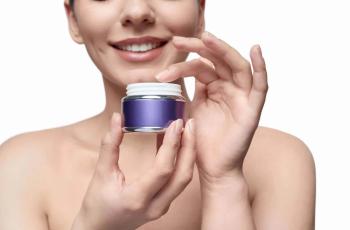
.webp)
.webp)
.webp)
Can You Use Tea Tree and Witch Hazel with Retinol?
.webp)
.webp)
If you’re into skincare, you’ve likely heard of retinol. This powerful ingredient is often praised for its ability to reduce fine lines, improve texture, and boost skin renewal.
.webp)
.webp)
.webp)
But what about tea tree oil and witch hazel?
.webp)
.webp)
While retinol is widely used and well-studied, tea tree oil and witch hazel are lesser-known but equally fascinating ingredients. They’ve been trusted for generations thanks to their unique skin benefits.
.webp)
.webp)
.webp)
So, can you use tea tree oil or witch hazel alongside retinol? In this article, we’ll explore how these three ingredients work and whether it’s safe—and effective—to combine them.
.webp)
.webp)
Let’s break it down ingredient by ingredient and take a closer look at how to layer these skincare staples.
.webp)
.webp)
.webp)
What Does Tea Tree Oil Do for the Skin?
.webp)
.webp)
Tea tree oil has natural antibacterial properties, making it effective against the acne-causing P. acnes bacteria. This bacteria lives on the skin and can lead to pimples, whiteheads, and blackheads.
.webp)
.webp)
.webp)
Thanks to its anti-inflammatory effects, tea tree oil also helps calm red, irritated skin. It reduces inflammation, shrinks breakouts, and soothes the skin during active flare-ups.
.webp)
.webp)
Depending on how it’s formulated, tea tree oil can treat different types of acne. It’s useful for both comedonal acne (like blackheads) and inflammatory acne (like red, painful pimples).
.webp)
.webp)
.webp)
This makes tea tree oil a go-to option for oily and acne-prone skin types. It works best when used in a diluted form or combined with other calming ingredients.
.webp)
.webp)
However, despite being a natural remedy, tea tree oil is very potent. Misusing it can lead to dryness, irritation, or even chemical burns if applied undiluted.
.webp)
.webp)
.webp)
What Are the Benefits of Witch Hazel in Skincare?
.webp)
.webp)
Witch hazel is an herbal extract known for its soothing and clarifying properties. It’s rich in tannins, which act as natural astringents that tighten skin and minimize pores.
.webp)
.webp)
.webp)
One of the key benefits of witch hazel is oil control. It helps remove excess sebum from the skin’s surface, which reduces shine and keeps pores clean and unclogged.
.webp)
.webp)
Witch hazel also works below the surface, calming inflammation and reducing puffiness. It’s commonly used after shaving to ease razor bumps and calm irritated skin.
.webp)
.webp)
.webp)
For those with sensitive or combination skin, witch hazel can offer a refreshing balance. It provides cleansing and toning benefits without being overly harsh—when used correctly.
.webp)
.webp)
Still, not all witch hazel products are created equal. Some contain added alcohol, which can dry the skin. It’s best to choose alcohol-free formulas, especially when combining with actives.
.webp)
.webp)
.webp)
Why Is Retinol So Popular in Skincare?
.webp)
.webp)
Retinol is a vitamin A derivative known for speeding up cell turnover. It helps shed dead skin cells and reveal a brighter, smoother layer of skin beneath.
.webp)
.webp)
.webp)
One of its main benefits is stimulating collagen and elastin production. This makes the skin firmer and more youthful over time. It’s a favorite ingredient for anti-aging routines.
.webp)
.webp)
Retinol also improves skin tone and fades hyperpigmentation, sun spots, and dark marks. It’s especially helpful for people dealing with post-acne discoloration.
.webp)
.webp)
.webp)
In addition, it minimizes the appearance of fine lines and wrinkles, evens out skin texture, and helps unclog pores to prevent future breakouts.
.webp)
.webp)
But retinol is strong. It can cause peeling, dryness, redness, or irritation—especially when introduced too quickly or layered incorrectly with other actives.
.webp)
.webp)
.webp)
Can You Use Tea Tree Oil with Retinol?
.webp)
.webp)
The short answer: No, it’s not recommended to use tea tree oil and retinol together. Both are strong ingredients, and layering them may damage your skin barrier.
.webp)
Even though tea tree oil is natural, it’s highly concentrated and can strip the skin of essential moisture when combined with other potent actives like retinol.
Using both ingredients at the same time can lead to dryness, irritation, and increased sensitivity. This is especially true for people with dry, sensitive, or compromised skin.
If you want to use both in your skincare routine, apply them on alternate nights. For example, use retinol one night and tea tree oil the next to avoid overwhelming your skin.
Also, always dilute tea tree oil with a carrier oil like jojoba or almond oil. Never apply it directly to the skin, especially if you’re using other active ingredients in your routine.
Can You Use Witch Hazel with Retinol?
Yes, you can use witch hazel and retinol together—but proceed with care. It’s important to choose a gentle, alcohol-free witch hazel formula to prevent irritation.
Witch hazel can be a great addition to a routine that includes retinol. It helps tone the skin, tighten pores, and control oil without being overly aggressive.
The best way to pair them is by applying witch hazel as a toner before your retinol. This ensures your skin is clean and balanced, allowing the retinol to absorb better.
Give your skin a few minutes to dry after applying witch hazel, then follow up with retinol. Always finish with a moisturizer to seal in hydration.
Keep in mind that retinol can make the skin more sensitive. If irritation occurs, consider reducing usage or spacing out applications to give your skin time to recover.
What Should You Never Mix with Tea Tree Oil?
Avoid mixing tea tree oil with other strong actives such as:
Retinol, Glycolic acid, Salicylic acid, Benzoyl peroxide, Vitamin C (especially L-ascorbic acid)
Combining these ingredients with tea tree oil can strip the skin of its protective barrier. This leads to dryness, flakiness, and in severe cases, contact dermatitis.
Also, never apply undiluted tea tree oil directly to your face. Always mix it with a gentle carrier oil like coconut, almond, jojoba, or olive oil before use.
What Oil Pairs Well with Retinol?
Jojoba oil is considered the best carrier oil to use with retinol. It mimics your skin’s natural oils, making it extremely hydrating and non-comedogenic.
Jojoba oil helps counteract the dryness and flaking that retinol can cause. It also enhances retinol’s effects by soothing the skin and locking in moisture.
Other oils that work well with retinol include:
Squalane (light and hydrating), Rosehip oil (rich in vitamins), Marula oil (nourishing and gentle)
Apply the oil after your retinol serum, once the product has absorbed fully. This will help seal in the active and reduce any irritation that may arise overnight.
Does Tea Tree Oil Cause Purging?
Yes, tea tree oil can cause purging, especially if you’re new to exfoliating ingredients. Purging happens when clogged pores are rapidly cleared out, causing breakouts.
This is a normal reaction when skin cell turnover increases. As the tea tree oil sloughs off dead skin cells, trapped impurities are pushed to the surface.
While purging may resemble a breakout, it’s usually temporary. It typically lasts 2 to 4 weeks and is followed by clearer, smoother skin.
To minimize purging, introduce tea tree oil slowly and always use a diluted version. Start with once-a-week use and gradually increase frequency as your skin adjusts.
Can You Leave Tea Tree Oil on the Skin Overnight?
Yes, tea tree oil can be left on the skin overnight—but only when diluted. Never apply it straight from the bottle to your face, as it can cause burns and irritation.
To use tea tree oil overnight, mix a few drops with a carrier oil and apply it sparingly to clean skin. Avoid the eye area and any broken skin.
Rinse off any remaining oil in the morning using warm water and a gentle cleanser. For best results, limit overnight use to once or twice per week.
This allows you to enjoy the antibacterial and calming benefits of tea tree oil without risking skin barrier damage or excessive dryness.
Final Thoughts
Using tea tree oil, witch hazel, and retinol in your skincare routine can offer a variety of benefits. But understanding how to pair them properly is key to preventing irritation.
Tea tree oil and retinol should not be used at the same time. Instead, alternate them to give your skin time to recover and avoid barrier disruption.
Witch hazel and retinol can work well together when used thoughtfully. Opt for alcohol-free witch hazel and always follow with a good moisturizer.
And as always, if you’re introducing new products or ingredients, start slowly. Patch test first, and consult with a dermatologist if you’re unsure how your skin might react.
Taking a mindful approach to your skincare will ensure your skin stays healthy, radiant, and balanced—no matter what powerhouse ingredients you choose to use.



